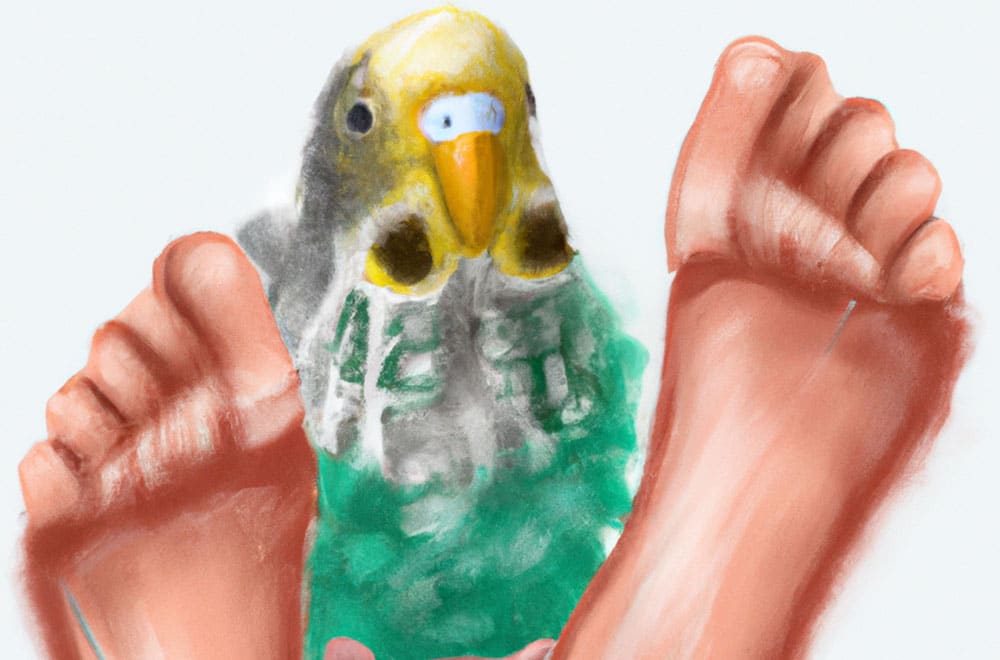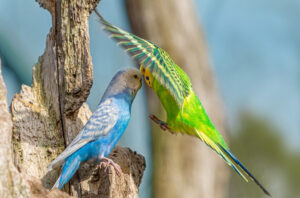Budgies, also known as parakeets, are small, colorful birds that make popular pets due to their playful and sociable nature.
However, many budgie owners may not realize the importance of proper care for their pet’s feet. In this article, we will discuss the importance of maintaining healthy feet for budgies, and provide tips for ensuring your pet’s feet stay in top condition.
Why are healthy feet important for budgies?
Just like any other animal, the health of a budgie’s feet is essential for their overall well-being. Healthy feet enable budgies to perch comfortably and move around their cage or aviary with ease. Unhealthy feet, on the other hand, can lead to pain, discomfort, and difficulty in moving, which can affect a budgie’s quality of life.
Proper diet and exercise are crucial for maintaining healthy feet in budgies. A diet rich in vitamins, minerals, and protein is essential for strong bone growth, while regular exercise helps to keep the feet muscles strong and flexible.
Another important factor to consider is the type of perch provided for your budgie. Natural perches, such as branches, are recommended as they provide more grip and exercise for the feet than plastic or metal perches. It’s important to have different sizes of perches to give variety to the birds and also to keep the nails trimmed.
How to check for healthy feet in budgies
It’s important to regularly check your budgie’s feet for signs of any problems. Some common signs of unhealthy feet include swelling, redness, and discharge. If you notice any of these symptoms, it’s important to seek the advice of a veterinarian.
Another important aspect to check is the nails, they should be trimmed regularly, as overgrown nails can make it difficult for a budgie to perch and move around comfortably.
Tips for maintaining healthy feet in budgies
- Provide a varied diet that is rich in vitamins, minerals, and protein
- Provide plenty of opportunities for exercise and play, both inside and outside of the cage
- Use natural perches, such as branches, in the cage
- Regularly check the feet for signs of any problems and seek the advice of a veterinarian if necessary.
- Trim the nails regularly
- Maintain good hygiene in the cage
The importance of a varied diet
A balanced diet is essential for maintaining good overall health in budgies, including their feet. Make sure to provide a variety of fresh fruits, vegetables, and protein sources, such as seeds, nuts, and small amounts of cooked meat.
Opportunities for exercise and play
Budgies are active birds that need plenty of space to move around and play. Make sure to provide a large cage or aviary that allows them to fly and perch comfortably. Offer plenty of toys and activities to keep them mentally and physically stimulated.
Use natural perches
Provide perches made of natural materials, such as branches, in the cage to offer a variety of textures and sizes to your budgies which will help to keep their feet healthy. Avoid perches that are too small or too close together.
Regularly check the feet for signs of any problems
Keep an eye on your budgie’s feet for any signs of redness, swelling, or soreness. If you notice any problems, seek the advice of a veterinarian as soon as possible.
Trim their nails regularly
Overgrown nails can make it difficult for your budgie to perch properly and can lead to foot problems. It’s important to trim the nails regularly, ideally with the help of a veterinarian or a professional groomer.
Maintain good hygiene in the cage
Keep the cage clean and dry, and avoid overcrowding to prevent the development of fungal or bacterial infections.
Seek professional help
Remember to always consult with your veterinarian if you have any concerns or notice any problems with your budgie’s feet.
Budgie feet problems
Budgies are active birds that need plenty of space to move around and play. They should have a cage or aviary that is large enough for them to fly and perch comfortably.
If the cage is too small or the perches are too close together, it can lead to problems with the budgie’s feet and legs.
Fractures
Budgies like all birds are active and can accidentally break their bones if they fly or jump into something hard, this can happen in their feet, legs or even their wings. This may require veterinary attention and can lead to permanent disability if not treated promptly.
Bumblefoot
One common issue is bumblefoot, which is a bacterial infection that occurs on the bottom of the budgie’s feet. It is characterized by red, swollen, and sore-looking patches on the feet.
Bumblefoot can be caused by dirty or rough perches, as well as by injury from climbing or jumping. If left untreated, it can lead to serious infections and even amputation of the affected foot.
Overgrown nails
Another issue that can affect budgies’ feet is overgrown nails. Budgies need to have their nails trimmed regularly to prevent them from growing too long and causing discomfort or injury. Overgrown nails can also make it difficult for the budgie to perch properly and can lead to foot problems.
Arthritis
In addition, budgies can also develop arthritis in their feet, which can make it difficult for them to move around and perch. Arthritis is most commonly seen in older birds, but it can also occur in younger birds that have had previous injuries or have been overweight.
Scaly leg mite
This is a parasitic mite that burrows under the scales on a bird’s legs and feet, causing inflammation, itching, and thickening of the scales. If left untreated, it can lead to serious infection and even amputation of the affected leg.
Deformities
Birds can develop deformities in their feet, such as curled toes or twisted legs, which can make it difficult for them to walk or perch. These deformities can be caused by genetics or injury.
Gout
This is a metabolic disorder that can cause crystals to form in the joints and soft tissue of the feet, leading to inflammation and pain. Gout is most commonly seen in older or overweight birds, but can also occur in younger birds.
Spraddle leg
This is a condition in which the legs are spread out to the side and not able to support the bird’s weight. This can happen in young birds, mainly chicks, and can be caused by genetics or improper brooding conditions.
Fungal infections
Birds can develop fungal infections on their feet, which can cause itching, redness, and discharge. These infections can be caused by dirty or wet conditions, as well as by injury or trauma to the feet.
Pododermatitis
Pododermatitis is an inflammatory condition that affects the skin and underlying tissue on the bottom of the feet.
Conclusion
In conclusion, healthy feet are essential for the overall well-being of budgies. Proper diet, exercise, and a healthy environment are all important factors in maintaining healthy feet for your pet.
To prevent foot problems in budgies, it’s essential to keep their cage or aviary clean and well-maintained. Provide appropriate perches of different sizes and textures to give them the opportunity to exercise and strengthen their feet.
Regularly check and trim their nails and observe them for any signs of discomfort or limping.
If you notice any signs of foot problems in your budgie, it’s important to seek veterinary care as soon as possible. With proper care, budgies can live happy and healthy lives with strong and healthy feet.
Allow your budgie to move around comfortably and enjoy a high quality of life!




